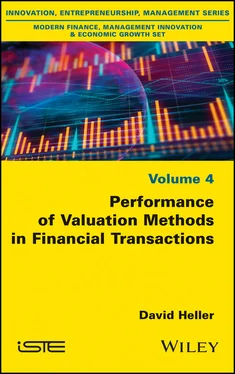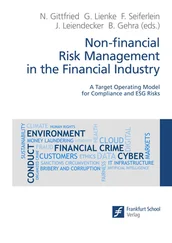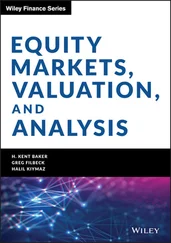Performance of Valuation Methods in Financial Transactions
Здесь есть возможность читать онлайн «Performance of Valuation Methods in Financial Transactions» — ознакомительный отрывок электронной книги совершенно бесплатно, а после прочтения отрывка купить полную версию. В некоторых случаях можно слушать аудио, скачать через торрент в формате fb2 и присутствует краткое содержание. Жанр: unrecognised, на английском языке. Описание произведения, (предисловие) а так же отзывы посетителей доступны на портале библиотеки ЛибКат.
- Название:Performance of Valuation Methods in Financial Transactions
- Автор:
- Жанр:
- Год:неизвестен
- ISBN:нет данных
- Рейтинг книги:4 / 5. Голосов: 1
-
Избранное:Добавить в избранное
- Отзывы:
-
Ваша оценка:
- 80
- 1
- 2
- 3
- 4
- 5
Performance of Valuation Methods in Financial Transactions: краткое содержание, описание и аннотация
Предлагаем к чтению аннотацию, описание, краткое содержание или предисловие (зависит от того, что написал сам автор книги «Performance of Valuation Methods in Financial Transactions»). Если вы не нашли необходимую информацию о книге — напишите в комментариях, мы постараемся отыскать её.
Performance of Valuation Methods in Financial Transactions — читать онлайн ознакомительный отрывок
Ниже представлен текст книги, разбитый по страницам. Система сохранения места последней прочитанной страницы, позволяет с удобством читать онлайн бесплатно книгу «Performance of Valuation Methods in Financial Transactions», без необходимости каждый раз заново искать на чём Вы остановились. Поставьте закладку, и сможете в любой момент перейти на страницу, на которой закончили чтение.
Интервал:
Закладка:
120 113
121 114
122 115
123 116
124 117
125 118
126 119
127 120
128 121
129 122
130 123
131 124
132 125
133 126
134 127
135 128
136 129
137 130
138 131
139 132
140 133
141 134
142 135
143 136
144 137
145 138
146 139
147 140
148 141
149 142
150 143
151 144
152 145
153 146
154 147
155 148
156 149
157 150
158 151
159 152
160 153
161 154
162 155
163 156
164 157
165 158
166 159
167 160
168 161
169 162
170 163
171 164
172 165
173 166
174 167
175 169
176 170
177 171
178 172
179 173
180 174
181 175
182 176
183 177
184 179
185 180
186 181
187 182
188 183
189 184
190 185
191 186
192 187
193 188
194 189
195 190
196 191
197 192
198 193
199 194
200 195
Modern Finance, Management Innovation and Economic Growth Set
coordinated by
Faten Ben Bouheni
Volume 4
Performance of Valuation Methods in Financial Transactions
David Heller

First published 2021 in Great Britain and the United States by ISTE Ltd and John Wiley & Sons, Inc.
Apart from any fair dealing for the purposes of research or private study, or criticism or review, as permitted under the Copyright, Designs and Patents Act 1988, this publication may only be reproduced, stored or transmitted, in any form or by any means, with the prior permission in writing of the publishers, or in the case of reprographic reproduction in accordance with the terms and licenses issued by the CLA. Enquiries concerning reproduction outside these terms should be sent to the publishers at the undermentioned address:
ISTE Ltd
27-37 St George’s Road
London SW19 4EU
UK
www.iste.co.uk
John Wiley & Sons, Inc
111 River Street
Hoboken, NJ 07030
USA
www.wiley.com
© ISTE Ltd 2021
The rights of David Heller to be identified as the author of this work have been asserted by him in accordance with the Copyright, Designs and Patents Act 1988.
Library of Congress Control Number: 2020951018
British Library Cataloguing-in-Publication Data
A CIP record for this book is available from the British Library
ISBN 978-1-78630-636-4
Introduction
In France, public tender offers, public exchange offers and combined offers are all processes of acquisition. The governing regulations of the Autorité des marchés financiers (AMF) guide how these public offers are carried out. Before they are launched, the initiator, with the help of their advisory bank, undertakes a process of analysis, with the main objective of determining the financial capacity of the business, in order to reach an offer price that will be proposed to the security holders of the company under evaluation. As underlined by Bellalah (1998), the shareholder will only divest their shares to the initiator of the offer if they consider the price proposed to be satisfactory. Therefore, the market capitalization of the target company is not enough to constitute the benchmark for the offer price; the evaluation must always follow an approach informed by multiple criteria.
The direct link between the profit reaped from a company’s investments and the profit demanded by the company’s investors will determine the quality of the investment policy pursued. By generating cash flows such that they maximize the amount of value created by the economic asset, a well-conducted investment policy will result in a higher return on investment than that demanded by investors. The economic value of shareholder equity will then increase. However, if the investment policy fails, the shareholder may sanction the company in question by selling its securities. They will then face financial difficulties, insofar as their economic assets have been devalued. And so, the shareholder has the power to grant funds to the company, and must, in this scenario, understand how to properly evaluate the company’s assets from an economic perspective, as well as their shareholder equity.
Beyond a sufficiently profitable investment policy, maximizing the value of economic assets comes from an optimal financial structure. Indeed, in order to determine the value of the economic asset, the cash flows that result from the investment policy are brought in line with the cost of capital. In this instance, it would be possible to have the ability to maximize this rate by using an appropriate financial policy. Evaluation regarding the structure of liabilities must include considerations that go well beyond the simple cost of different sources of financial gain. There are three major elements to take into account when looking to evaluate the feasibility of an optimal financial policy: these are taxation, both at the level of the company and of the individual, consideration of the costs of dysfunction and bankruptcy that an additional amount of debt would incur, and the behavioral phenomena in theories created by organizations. Indeed, beyond the framework of the theory of market equilibrium which considers the company to be a single player, conflicts between the various stakeholders, who do not always share the same interests nor make the same choices when it comes to the correct financial policy to be adopted, inevitably impact the nature and distribution of the funds that are granted to the company.
The traditional valuation of equity can be undertaken indirectly by first estimating the economic asset, and then subtracting the value of net debt after adjustment, or directly by adopting an average industry multiple. Within the acquisition market and in view of the sums involved, the valuation of the target company is essential to be able to come to a target buyback price for which a control premium is calculated, and before embarking on any negotiations with potential buyers. In short, valuation helps to make decisions about an opportunity for merger or partnership. More generally, this exercise is designed to help position the company within its particular market in terms of performance, as well as to improve the way it is managed and run, with a view to generate value by working on the areas that have been identified as weaknesses. In addition to this, valuation constitutes a tool that facilitates the development of a company that is seeking out opportunities for new financial support and entering new markets, for example. Finally, valuing the securities of the company allows us to comply with tax legislation and potentially reap the rewards that it offers.
The target price of a company can be fixed according to its assets, its competitors or even how it is predicted to progress into the future. A business plan will encompass all of these aspects. In practice, business valuation is carried out by at least three types of professionals: Financial analysts, who determine target prices for listed companies and provide recommendations on whether to buy, sell or hold stock. Corporate and investment banks assess companies for mergers and acquisitions. In France, if the target company is listed, its valuation must be submitted to the AMF in order to justify that the offer price is satisfactory for all of the stakeholders involved. The evaluation is therefore incorporated into a specific document that is sent to the organization with the aim of obtaining a visa. Here, several valuation methods may come into play. The offer price is the result of an analysis informed by multiple criteria. If the company is not listed, a public offer for tender is usually initiated by the banks. In this case, the seller’s advisory bank sends a document that briefly describes the characteristics of the company to be sold to potential buyers. Questioned at the start about their possible interest in the company, the potential buyers formulate an indicative offer based on their own valuation of the target company and an informative note which contains past accounts and the business plan. Then, potential acquirers may put forward a binding offer, which may be significantly different from that conceived at the beginning, on the basis of receiving additional data from due diligence services following meetings with management. Corporate and investment banks also perform equity capital market valuations during initial public offerings, and more traditional issuances. Finally, the transactions, for which the private equity analysts are responsible, are carried out with leverage buy out (LBO). Their approach is different, as the value of the target company is a result of the resources (equity and debts) that can be raised by a holding company that is created ad hoc . Capital investors demand an internal rate of return of 20% over 3–5 years. The debt raised from banks has its own constraints: 80% of senior debt is absorbed on a linear basis over 7 years, and 20% is reimbursed in the end.
Читать дальшеИнтервал:
Закладка:
Похожие книги на «Performance of Valuation Methods in Financial Transactions»
Представляем Вашему вниманию похожие книги на «Performance of Valuation Methods in Financial Transactions» списком для выбора. Мы отобрали схожую по названию и смыслу литературу в надежде предоставить читателям больше вариантов отыскать новые, интересные, ещё непрочитанные произведения.
Обсуждение, отзывы о книге «Performance of Valuation Methods in Financial Transactions» и просто собственные мнения читателей. Оставьте ваши комментарии, напишите, что Вы думаете о произведении, его смысле или главных героях. Укажите что конкретно понравилось, а что нет, и почему Вы так считаете.












